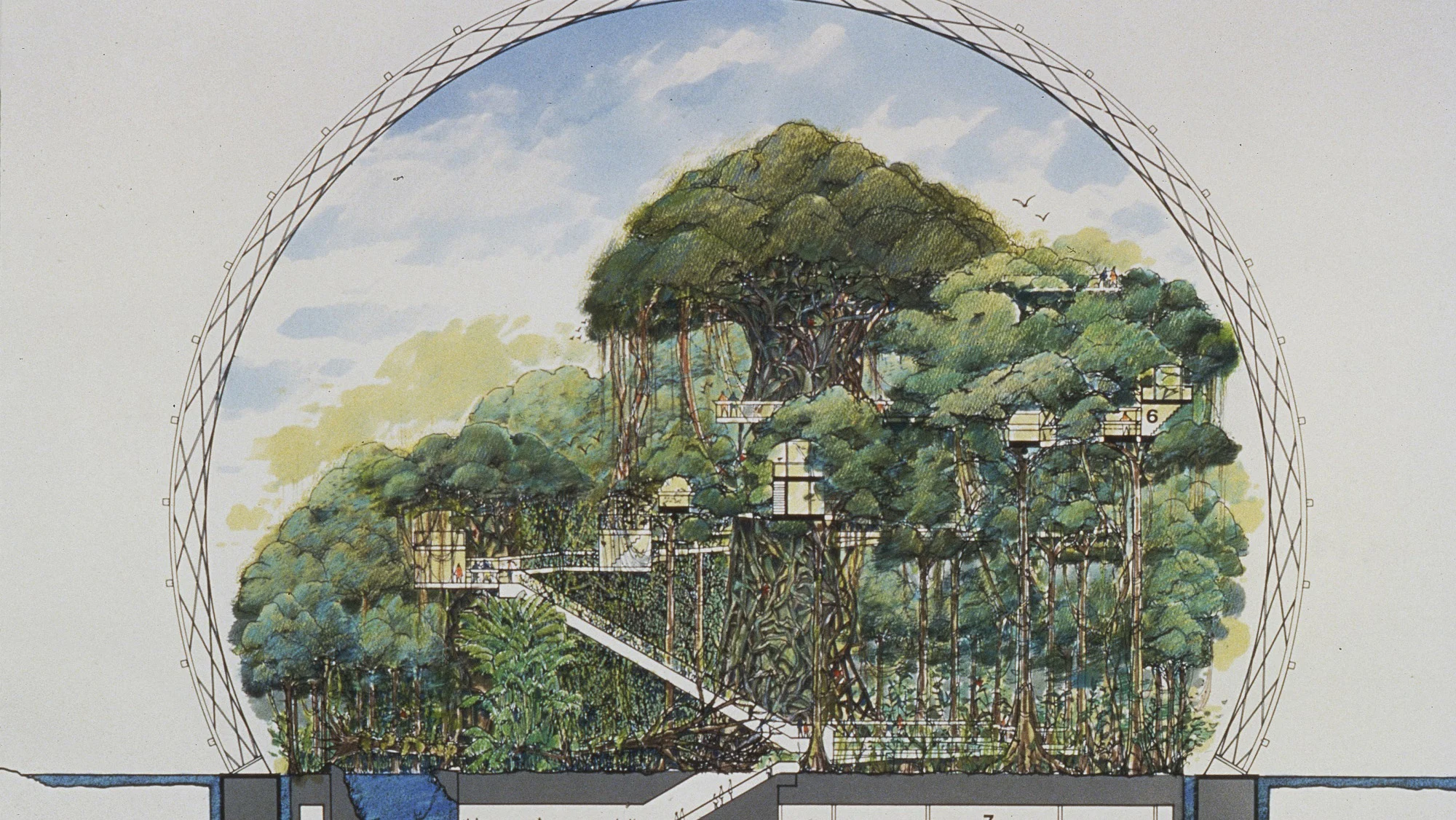MoMA Show Analyzes 'How Far We've Come' In Eco-architecture
The MoMA show analyzes 'how far we've come' in eco-architecture. The exhibition now on display at the Museum of Modern Art in New York explores the interplay between ecology and architecture during the 20th century.
Author:George EvansSep 18, 20237.5K Shares445K Views

The MoMA show analyzes 'how far we've come' in eco-architecture. The exhibition now on display at the Museum of Modern Art in New York explores the interplay between ecology and architecture during the 20th century.
The show, titled "Emerging Ecologies: Architecture and the Rise of Environmentalism," provides an extensive overview of architectural endeavors, both realized and conceptualized, during the 20th century.
It encompasses a diverse range of mediums, including drawings, pictures, models, and interactive components. The event, which was initiated by the Ambasz Institute of the Museum of Modern Art (MoMA), aims to provide the general public with access to many intellectual perspectives, especially those that are less familiar to a wide audience.
Exhibition curator and Ambasz Institute director:
“„The aim is to have, for the first time in a major museum, a platform where the fraught relationship between architecture and environment can really be discussed and researched and communicated to a wider public.- Carson Chan
The television program primarily centers on historical events, with a particular emphasis on the efforts undertaken throughout the 1960s and 1970s. This period witnessed a significant dissemination of ecological concepts to the wider populace, as shown by the widespread reception of ideas presented in Rachel Carson's influential publication, Silent Spring.
Nevertheless, antecedents leading up to that particular juncture encompassed the contributions of architects from the early twentieth century, such as Frank Lloyd Wright, who championed the concept of organic building, and Richard Neutra, who advocated for the implementation of "climate-sensitive architecture."
In a statement to Dezeen, Chan said that the intention behind this historical emphasis was to provide modern audiences with a contextual understanding of the origins of present-day trends.
“„A lot of ideas have changed from that moment, half a century ago. The show is looking at how far we've come from that moment, but also look at what we can learn from that moment to trying to understand where people were coming from, why they kind of the ambitions they had, why they wanted to do things, the things they wanted to do. Assessing that moment is a big part of the show.- Carson Chan
Among the works are some highly conceptual architectural designs, like American architect Buckminster Fuller's planned dome above Manhattan, Glen Small's sci-fi-inspired Biomorphic Biospheres, and Malcolm Wells' subterranean building.
Eugene Tsuii, a contemporaneous architect, also used biomorphic elements in his paintings. These works envisioned radical infrastructures that took into consideration changing ecosystems and expanding people.
Built work includes Michael Reynolds' waste-built Earthships and the New Alchemy Institute's self-sufficient ark structures, as well as the tree-covered works of Argentine architect Emilio Ambasz, for whom the MoMA's aforementioned institute is called.
There were other works of radical mapping that intended to highlight the landscape's intricacy. These were sophisticated ecological maps of the Delaware Upper Estuary created by American scholar Ian McHarg, which displayed data-driven layers of biological factors like soil conditions and sun exposure.
However, Chan was cautious to point out that these environmental understandings predate the environmental movement.
“„Doing research or producing knowledge about the environment – or as I call it, producing ecological knowledge about the environment – did not start in the '60s and '70s. There are communities of Indigenous people that have been tending to the land for generations.- Carson Chan
He continued:
“„The Delaware River Basin is the ancestral homeland of the Lenape people who possessed this very knowledge already. And we could have received it from them if they weren't displaced in the first place. Making structures requires money and requires people to be proximate to power. And so this is one reason why historically we haven't seen a lot of structures by people of color, and by women.- Carson Chan
The incorporation of these communities centered mostly on political engagement. Stopping big projects that modify landscapes is, in and of itself, a form of architecture, as was demonstrated by the Yavapai people's resistance against a planned dam on ancestral grounds.
“„Subtracting is also a way of making architecture.- Carson Chan
To help put the historical work on display in context, the organizers incorporated a variety of tiny audio devices with comments from modern architects and designers such as Jeanne Gang and Mai-Ling Lokko.
Final Words
In addition to hosting exhibits and community engagement programs, the Ambasz Institute will host conferences on topics related to environmental sustainability in the built environment. At the Cooper Union in New York City, there is an exhibition that explores the history and work of Vkhutemas, a Soviet avant-garde school of architecture.
Jump to

George Evans
Author
George Anderson, an exceptional architectural designer, envisions and brings to life structures that transcend the realm of imagination. With an unwavering passion for design and an innate eye for detail, George seamlessly blends form and function, creating immersive spaces that inspire awe.
Driven by a deep appreciation for the interplay of space, light, and materials, George's innovative approach redefines the possibilities of architectural design. His visionary compositions leave an indelible mark, evoking a sense of wonder and transforming the built environment.
George Anderson's transformative designs and unwavering dedication continue to shape the architectural landscape, pushing the boundaries of what is possible and inspiring generations to come.
Latest Articles
Popular Articles